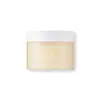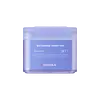What's inside
What's inside
 Key Ingredients
Key Ingredients

 Benefits
Benefits

 Concerns
Concerns

 Ingredients Side-by-side
Ingredients Side-by-side

Water
Skin ConditioningMethylpropanediol
SolventDipropylene Glycol
HumectantGlycerin
HumectantNiacinamide
SmoothingOlea Europaea Fruit Oil
MaskingHydroxyacetophenone
AntioxidantCaprylyl Glycol
EmollientC12-14 Alketh-12
EmulsifyingPolyglyceryl-3 Methylglucose Distearate
EmulsifyingCeramide AP
Skin Conditioning1,2-Hexanediol
Skin ConditioningCarbomer
Emulsion StabilisingBetaine
HumectantArginine
MaskingSodium Citrate
BufferingGlyceryl Stearate Se
EmulsifyingEthylhexylglycerin
Skin ConditioningMethyl Glucose Sesquistearate
EmollientAdenosine
Skin ConditioningCitric Acid
BufferingXanthan Gum
EmulsifyingOryza Sativa Bran Extract
Skin ConditioningOryza Sativa Extract
AbsorbentDipotassium Glycyrrhizate
HumectantDisodium EDTA
Water, Methylpropanediol, Dipropylene Glycol, Glycerin, Niacinamide, Olea Europaea Fruit Oil, Hydroxyacetophenone, Caprylyl Glycol, C12-14 Alketh-12, Polyglyceryl-3 Methylglucose Distearate, Ceramide AP, 1,2-Hexanediol, Carbomer, Betaine, Arginine, Sodium Citrate, Glyceryl Stearate Se, Ethylhexylglycerin, Methyl Glucose Sesquistearate, Adenosine, Citric Acid, Xanthan Gum, Oryza Sativa Bran Extract, Oryza Sativa Extract, Dipotassium Glycyrrhizate, Disodium EDTA
Water
Skin ConditioningDipropylene Glycol
Humectant1,2-Hexanediol
Skin ConditioningBetaine
HumectantSodium PCA
HumectantHydroxyacetophenone
AntioxidantOctyldodeceth-16
EmulsifyingHydroxyethyl Urea
HumectantDipotassium Glycyrrhizate
HumectantSodium Citrate
BufferingAllantoin
Skin ConditioningXanthan Gum
EmulsifyingHydroxyethylcellulose
Emulsion StabilisingCitric Acid
BufferingDisodium EDTA
Olea Europaea Fruit Oil
MaskingGlycerin
HumectantSea Water
HumectantMyosotis Sylvatica Flower/Leaf/Stem Extract
Skin ConditioningButylene Glycol
HumectantPolyglyceryl-10 Laurate
Skin ConditioningAbies Sibirica Oil
MaskingHydrogenated Lecithin
EmulsifyingRosmarinus Officinalis Leaf Oil
MaskingPseudoalteromonas Ferment Extract
HumectantSalvia Sclarea Oil
MaskingCetraria Islandica Extract
CleansingMentha Aquatica Extract
TonicAnthemis Nobilis Flower Oil
MaskingJuniperus Mexicana Oil
MaskingChamomilla Recutita Flower Oil
MaskingMangifera Indica Fruit Extract
Skin ConditioningLactobacillus Ferment
Skin ConditioningCaprylyl Glycol
EmollientWater, Dipropylene Glycol, 1,2-Hexanediol, Betaine, Sodium PCA, Hydroxyacetophenone, Octyldodeceth-16, Hydroxyethyl Urea, Dipotassium Glycyrrhizate, Sodium Citrate, Allantoin, Xanthan Gum, Hydroxyethylcellulose, Citric Acid, Disodium EDTA, Olea Europaea Fruit Oil, Glycerin, Sea Water, Myosotis Sylvatica Flower/Leaf/Stem Extract, Butylene Glycol, Polyglyceryl-10 Laurate, Abies Sibirica Oil, Hydrogenated Lecithin, Rosmarinus Officinalis Leaf Oil, Pseudoalteromonas Ferment Extract, Salvia Sclarea Oil, Cetraria Islandica Extract, Mentha Aquatica Extract, Anthemis Nobilis Flower Oil, Juniperus Mexicana Oil, Chamomilla Recutita Flower Oil, Mangifera Indica Fruit Extract, Lactobacillus Ferment, Caprylyl Glycol
 Reviews
Reviews

Ingredients Explained
These ingredients are found in both products.
Ingredients higher up in an ingredient list are typically present in a larger amount.
1,2-Hexanediol is a synthetic liquid and another multi-functional powerhouse.
It is a:
- Humectant, drawing moisture into the skin
- Emollient, helping to soften skin
- Solvent, dispersing and stabilizing formulas
- Preservative booster, enhancing the antimicrobial activity of other preservatives
Betaine is a common humectant (a substance that promotes retention of moisture). It's known to be gentle on the skin and can help balance hydration.
This ingredient is best for improving hydration and soothing irritated skin. Studies also show it helps even out skin tone.
Fun fact: Betaine is naturally created in the skin and body. The kind found within cosmetic products can be either plant-derived or synthetic.
Another name for betaine is trimethylglycine.
Learn more about BetaineCaprylyl Glycol is a humectant and emollient, meaning it attracts and preserves moisture.
It is a common ingredient in many products, especially those designed to hydrate skin. The primary benefits are retaining moisture, skin softening, and promoting a healthy skin barrier.
Though Caprylyl Glycol is an alcohol derived from fatty acids, it is not the kind that can dry out skin.
This ingredient is also used as a preservative to extend the life of products. It has slight antimicrobial properties.
Learn more about Caprylyl GlycolCitric Acid is an alpha hydroxy acid (AHA) naturally found in citrus fruits like oranges, lemons, and limes.
Like other AHAs, citric acid can exfoliate skin by breaking down the bonds that hold dead skin cells together. This helps reveal smoother and brighter skin underneath.
However, this exfoliating effect only happens at high concentrations (20%) which can be hard to find in cosmetic products.
Due to this, citric acid is usually included in small amounts as a pH adjuster. This helps keep products slightly more acidic and compatible with skin's natural pH.
In skincare formulas, citric acid can:
While it can provide some skin benefits, research shows lactic acid and glycolic acid are generally more effective and less irritating exfoliants.
Most citric acid used in skincare today is made by fermenting sugars (usually from molasses). This synthetic version is identical to the natural citrus form but easier to stabilize and use in formulations.
Read more about some other popular AHA's here:
Learn more about Citric AcidDipotassium Glycyrrhizate comes from licorice root.
Extracts of licorice have demonstrated to have antibacterial, anti‐inflammatory, antiviral, antioxidant properties.
One component, glabridin, has extra potent antioxidant and soothing properties. It has also been found to block pigmentation from UVB rays in guinea pigs.
Licorice Root also contains a flavonoid. Flavonoids are a natural substance from in plants. Flavonoids also have antioxidant properties.
Another component, glycyrrhizin, has been found to have anti-inflammatory and antimicrobial benefits. This may make licorice root extract effective at treating acne. However, more research is needed to support this.
Liquiritin is one of the flavone compounds found in licorice. It has been found to help lighten skin by preventing tyrosinase from reacting with tyrosine. When the two react, protein is converted to melanin. Melanin is the substance in your body that gives your features pigmentation.
Licorice root is native to Southern Europe and Asia. It has been used in traditional Chinese medicine to help with respiratory issues.
Learn more about Dipotassium GlycyrrhizateDipropylene Glycol is a synthetically created humectant, stabilizer, and solvent.
This ingredient helps:
Dipropylene glycol is technically an alcohol, but it belongs to the glycol family (often considered part of the ‘good’ alcohols). This means it is hydrating and gentle on skin unlike drying solvent alcohols like denatured alcohol.
As a masking agent, Dipropylene Glycol can be used to cover the smell of other ingredients. However, it does not have a scent.
Studies show Dipropylene Glycol is considered safe to use in skincare.
Learn more about Dipropylene GlycolDisodium EDTA plays a role in making products more stable by aiding other preservatives.
It is a chelating agent, meaning it neutralizes metal ions that may be found in a product.
Disodium EDTA is a salt of edetic acid and is found to be safe in cosmetic ingredients.
Learn more about Disodium EDTAGlycerin is already naturally found in your skin. It helps moisturize and protect your skin.
A study from 2016 found glycerin to be more effective as a humectant than AHAs and hyaluronic acid.
As a humectant, it helps the skin stay hydrated by pulling moisture to your skin. The low molecular weight of glycerin allows it to pull moisture into the deeper layers of your skin.
Hydrated skin improves your skin barrier; Your skin barrier helps protect against irritants and bacteria.
Glycerin has also been found to have antimicrobial and antiviral properties. Due to these properties, glycerin is often used in wound and burn treatments.
In cosmetics, glycerin is usually derived from plants such as soybean or palm. However, it can also be sourced from animals, such as tallow or animal fat.
This ingredient is organic, colorless, odorless, and non-toxic.
Glycerin is the name for this ingredient in American English. British English uses Glycerol/Glycerine.
Learn more about GlycerinHydroxyacetophenone is antioxidant with skin conditioning and soothing properties. It also boosts the efficiency of preservatives.
This ingredient is not irritating or sensitizing.
Olea Europaea Fruit Oil is the fixed oil obtained from the ripe fruit of the Olive. In other words - olive oil.
The primary contents of olive oil are glycerides of the fatty acids linoleic, oleic and palmitic.
Olive oil also contains antioxidants such as Vitamin E. Antioxidants may help reduce signs of aging by fighting unstable free-radical molecules. It also contains Vitamins A (retinol), D, and K.
The squalene in olive oil makes it a great emollient. Emollients help soothe and soften your skin by trapping moisture in. This makes olive oil a great skin moisturizer.
Studies show olive oil to have antibacterial and antifungal properties in low concentrations. Another study found olive oil irritated sensitive oily skin. We always recommend speaking with a professional about using this ingredient in your routine.
Due to the fatty acid content, this ingredient may not be fungal-acne safe.
Learn more about Olea Europaea Fruit OilSodium Citrate is the sodium salts of citric acid. In skincare, it is used to alter pH levels and acts as a preservative.
Its main functions are to maintain the pH of a product and neutralize metal ions.
The acidity of our skin is maintained by our glands and skin biome; normal pH level of skin is slightly acidic (~4.75-5.5).
Being slightly acidic allows our skin to create an "acid mantle". This acid mantle is a thin barrier that protects our skin from bacteria and contaminants.
Learn more about Sodium CitrateWater. It's the most common cosmetic ingredient of all. You'll usually see it at the top of ingredient lists, meaning that it makes up the largest part of the product.
So why is it so popular? Water most often acts as a solvent - this means that it helps dissolve other ingredients into the formulation.
You'll also recognize water as that liquid we all need to stay alive. If you see this, drink a glass of water. Stay hydrated!
Learn more about WaterXanthan gum is used as a stabilizer and thickener within cosmetic products. It helps give products a sticky, thick feeling - preventing them from being too runny.
On the technical side of things, xanthan gum is a polysaccharide - a combination consisting of multiple sugar molecules bonded together.
Xanthan gum is a pretty common and great ingredient. It is a natural, non-toxic, non-irritating ingredient that is also commonly used in food products.
Learn more about Xanthan Gum